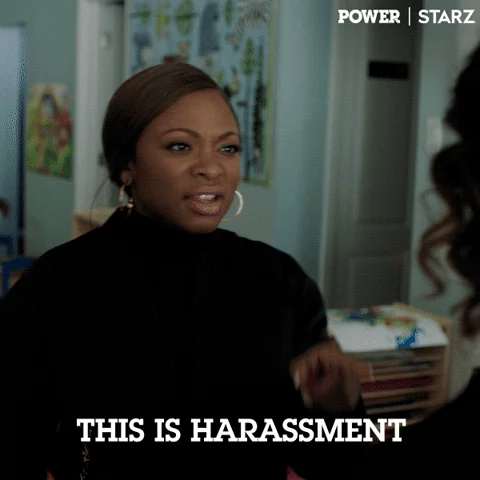Did you know that 7 in 10 workers have experienced a form of harassment or violence at work?
Workplace harassment takes many forms and they can have a negative impact on your productivity, comfort, and safety at work. The video below explains what types of harassment you might see at work:
Recognizing harassment is the first step to setting boundaries that lead to a safer, more supportive, and respectful work culture.
Types of Harassment in the Workplace

There are 6 main types of harassment in the workplace:
Verbal: Using hurtful words or threats to upset or anger someone.
Psychological: Scaring or manipulating someone to cause emotional harm.
Digital: Bullying someone online through social media, texts, or other electronic messages.
Physical: Hurting someone physically with aggressive actions.
Sexual: Making inappropriate comments or advances that make someone uncomfortable.
Personal bias: Treating someone unfairly because of their race, gender, religion, or other traits.
Quiz
You see your manager constantly trying to guilt-trip your coworker into doing things for them by saying, "If you don’t help me, we’re not friends anymore." What type of harassment could this be?
Recognizing Harassment

Recognizing these types of harassment at work is important for everyone's safety. Here are steps to help you spot it:
Watch how people act: Look for interactions that make you or others uncomfortable.
Look for clear signs: Notice instances like insults or unwanted contact.
Spot subtle behaviors: Be aware of sneaky actions, like making fun of someone or excluding them.
Check workplace policies: Review your workplace rules to see what counts as harassment.
Write it down: Keep track of examples and what happened.
Responding to Harassment
 Photo by The Jopwell Collection on Unsplash
Photo by The Jopwell Collection on UnsplashResponding to harassment shows it's unacceptable, supports victims, and prevents future incidents.
If you think you're experiencing or seeing any type of harassment, take these steps:
Trust your instincts: If something feels wrong, look into it.
Ask the person involved: See if the behavior is unwanted.
Check policies: Review company guidelines for clarification on what different types of harassment might look like.
Talk to HR or a supervisor: If you're unsure, report concerns to HR or a supervisor.
Quiz
If you're unsure whether a behaviour counts as harassment, what should you do next?
Finding Support After Witnessing or Experiencing Harassment

Witnessing and experiencing different types of harassment can be traumatic. Getting help after experiencing harassment is important for emotional, psychological, and social healing.
Here’s where you can seek assistance:
HR: Your workplace’s HR department handles harassment complaints and can guide you.
Workplace policies: Check your company's rules about harassment to understand your rights.
Emotional support: Talk to friends, family, or counsellors about your feelings.
Support groups: Joining a support group can connect you with others who understand.
Quiz
Which of the following can be effective ways to seek support after experiencing harassment? Select all that apply.
Take Action
Recognizing, responding to, and finding support for various types of workplace harassment will promote a safer and more respectful work environment.
 Photo by Priscilla Du Preez 🇨🇦 on Unsplash
Photo by Priscilla Du Preez 🇨🇦 on UnsplashYour feedback matters to us.
This Byte helped me better understand the topic.
